What is Diastasis Recti Abdominus (DRA)?
Your main tummy muscle is called the Rectus Abdominus (Also known as your “six pack” muscle). This muscle has a left and a right side, joined together by a thin band of tissue. DRA is the stretching of the band of tissue and widening of the area between the left and right sides of your tummy muscle during pregnancy.
DRA & Pregnancy
Women’s bodies have been designed to expand to allow your baby space to grow. Your tummy muscles become stretched out during pregnancy because of your expanding uterus and growing baby. Studies have shown that 100% of woman will have stretching and widening of their tummy muscle during pregnancy. The degree of widening may vary from person to person, but treatment can be very similar!
What Does it Look like?
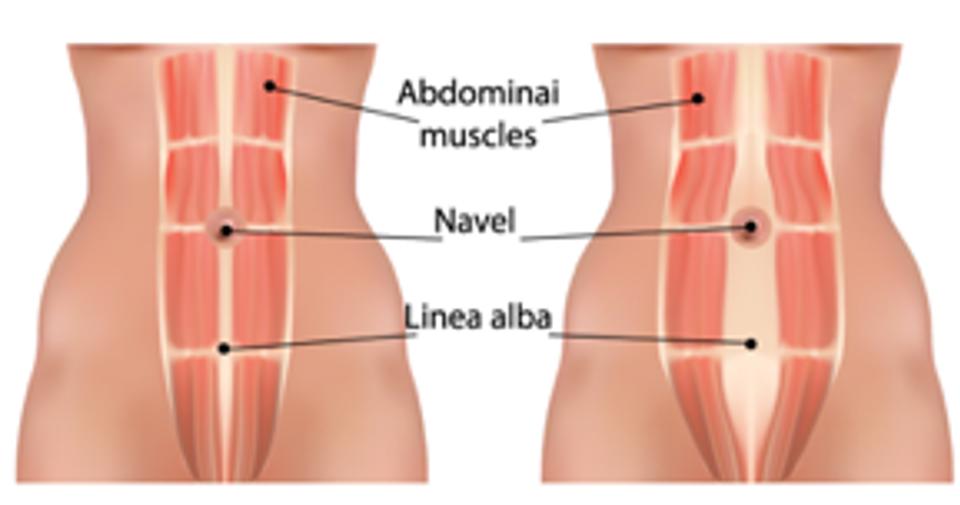
Why does DRA matter?
You might be asking yourself if DRA is a normal part of pregnancy, why does it matter? Your tummy muscles play an important role in supporting your body during movement (ex. sitting, standing, getting in/out of bed); and holding organs in place. DRA leads to weakness of your tummy muscles which can cause things like loss of coordination, low back pain, and pelvic girdle pain.
How can Exercise help?
DRA is treated through targeted exercises that help to maintain and optimize strength and function of your tummy muscles during your postpartum recovery. The goal of exercise is NOT to close the gap, but to create good tension over your tummy to get stronger. We have created a staged exercise program to help you achieve this. You can follow the exercise program below and when you feel ready, you can continue to the next stage.
Exercise program
Stage 1: Strengthening you deep tummy muscles
Introduction to Stage 1 DRAM
Posture
Diaphragmatic Breathing/Belly Breathing
Lie on your back, with your hand on your tummy. Breathe in through your nose towards your hands so that your belly rounds like a
balloon. Breathe out through your nose so that 'the balloon deflates.
Focus on breathing 'into your belly' instead of upper chest.
Practice for 5 mins 1-3 times per day
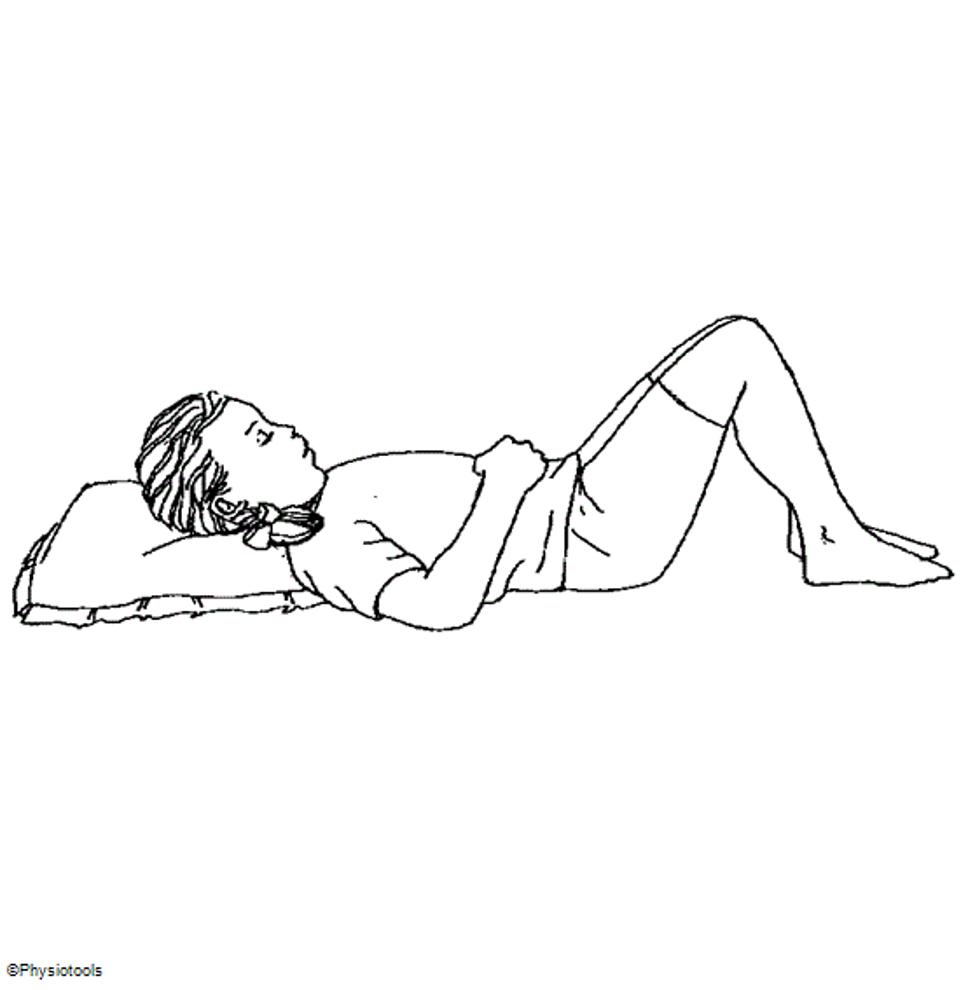
How to transition between positions
Lateral Breathing
Sit towards the front of your chair with feet flat on the floor. Place your hands on the sides of your ribs.
Breathe in through your nose towards your hands. Feel your lower chest expanding outward.
Breathe out through your nose. Feel your hands lowering.
Practice for 5 mins 1-3 times per day

Cat Cow
Start on your hands and knees. Round your back up like a cat. Hold for 3-5 seconds. Return so your back is flat (not arched).
Do this 3-5 times. You can do this daily
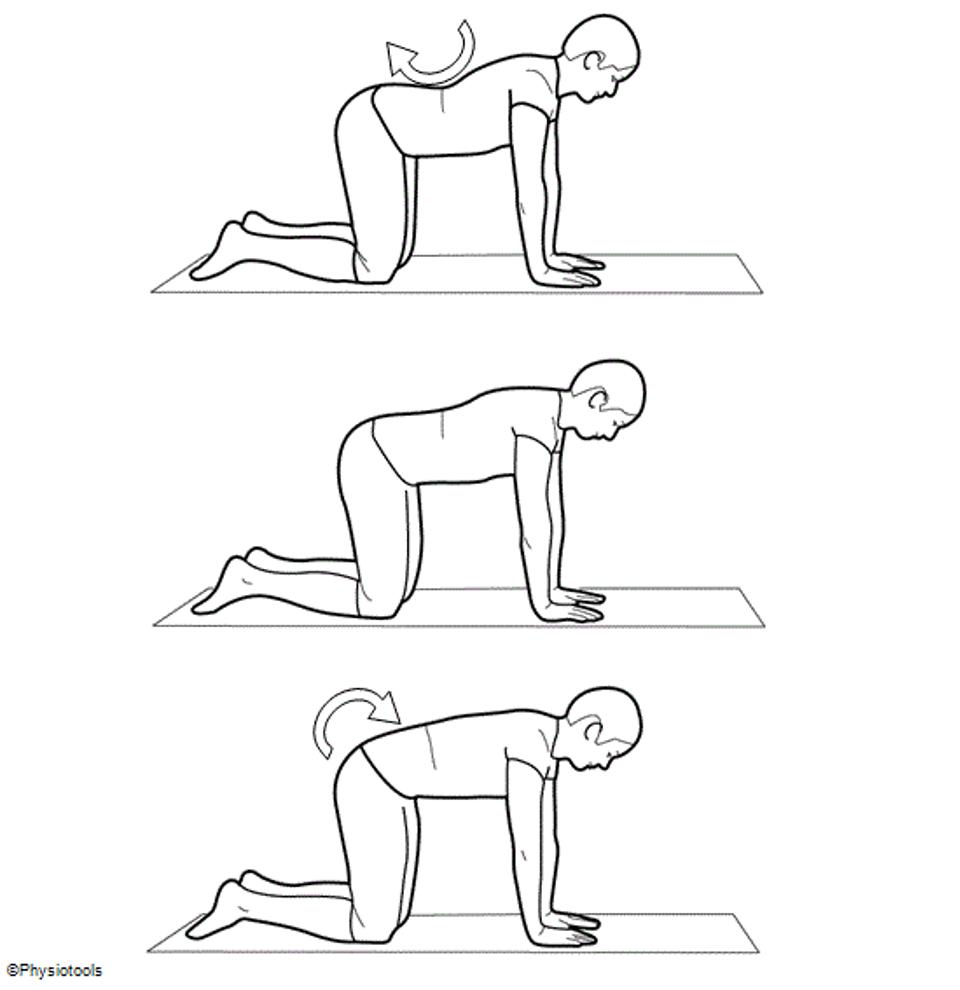
Deep Core Squeezes
Lie on your back with your hips and knees bent. Tighten your tummy muscles by bringing your belly button towards your spine. Hold for 3-5 seconds as you exhale and relax as you inhale.
Do this 3-5 times and daily
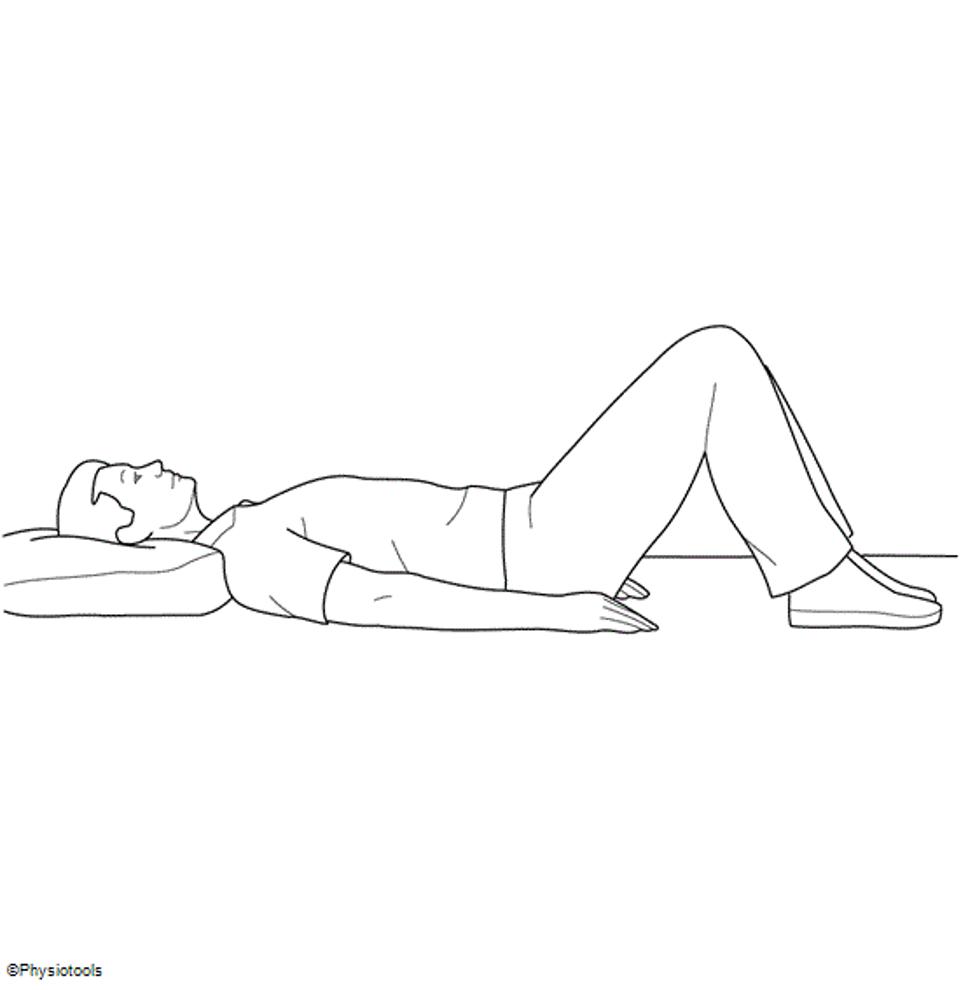
Core compressions In Quadruped
Start on your hands and knees. Shoulders rolled back away from your ears with your back flat. Keep breathing, Inhale, and then as you exhale, gently tighten your tummy muscles. Feeling your tummy draw in closer to your spine. Hold for 5 seconds then relax.
Do this 3-5 times and 3-5 times per week.
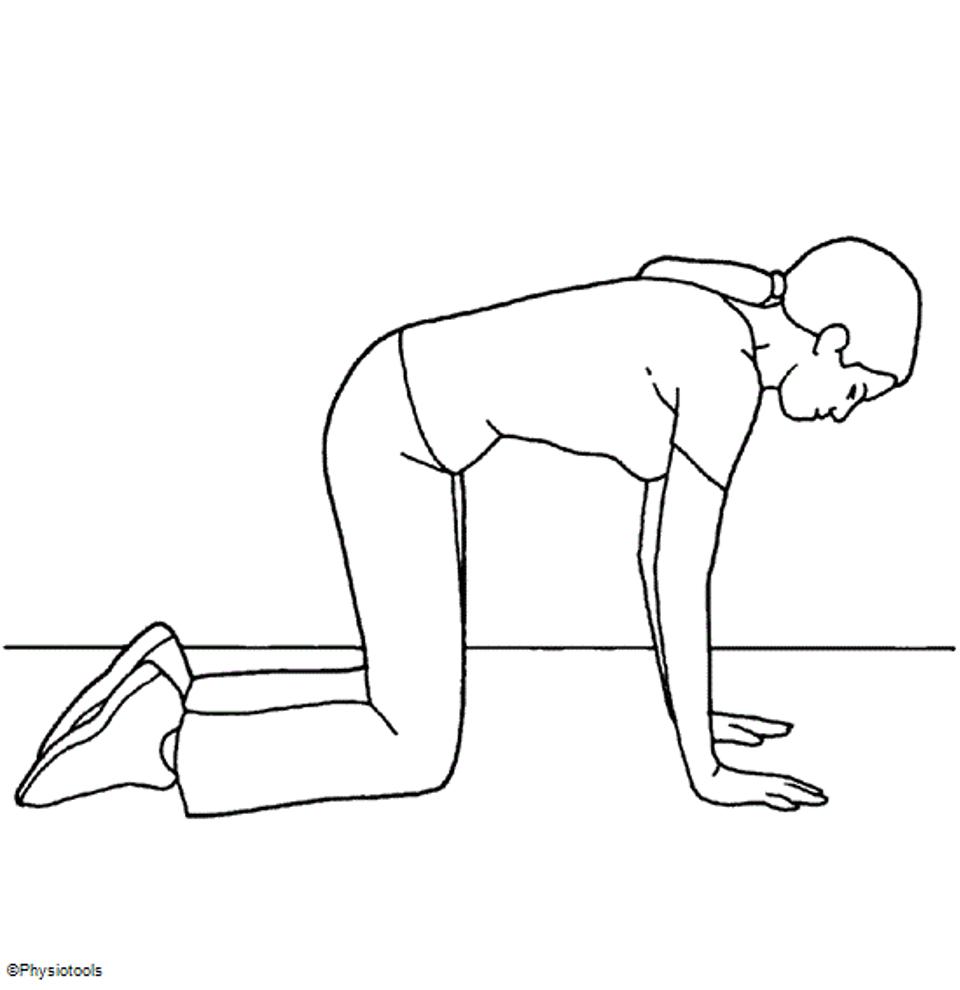
In Wall Plank
Place your hands flat on the wall with elbows straight in line with your shoulders. Position your body on a slight angle. Tighten your tummy muscles. While holding the first contraction, perform a second, feeling your tummy draw in closer to your spine. Hold for 2-3 seconds then relax.
Do this 5-8 times, 3-4 times per week
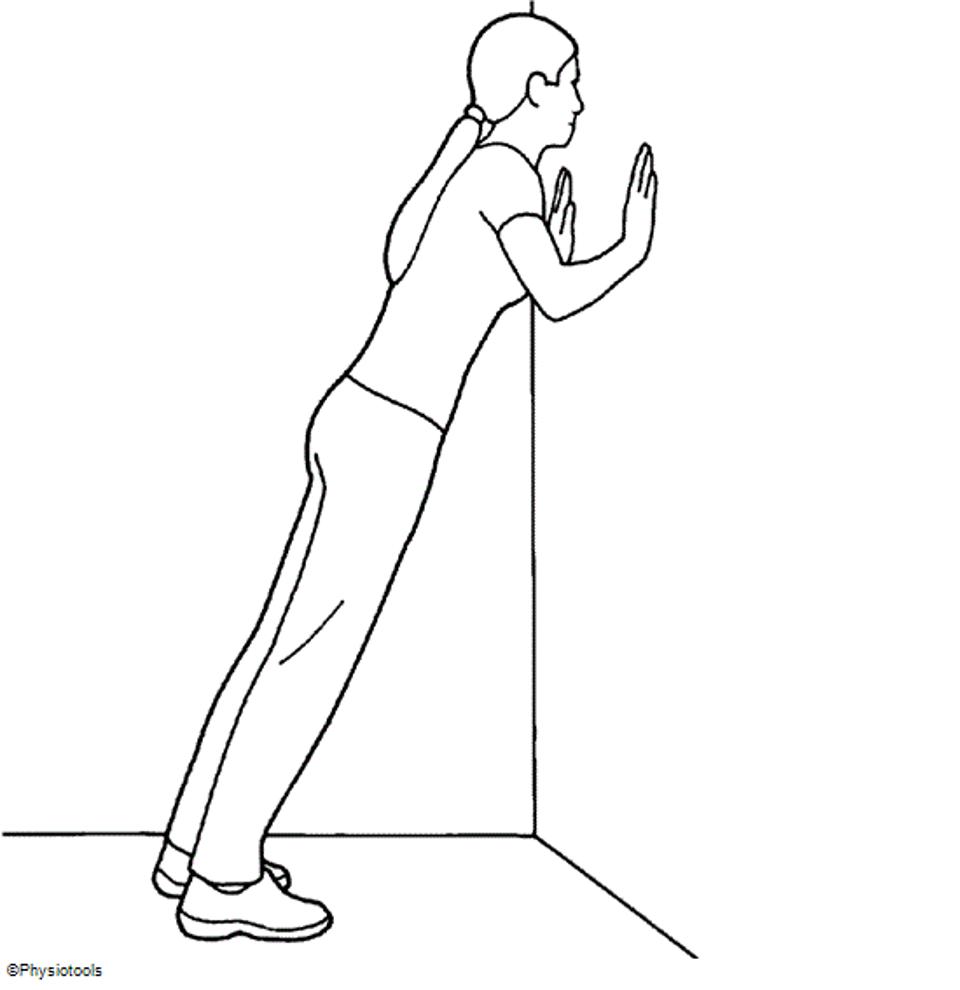
Pelvic Floor Exercises
Lie on your back or on your side with knees bent and relax your back, buttocks, legs, and abdomen.
Start from the back by tightening the muscles around your rectum and continue by tightening the muscles around your vagina and urethra as if trying to stop yourself passing urine. It should feel as if something is lifting upwards inside your pelvis. Breathe calmly.
Long Squeezes
Squeeze your pelvic floor muscles for 5- 10 seconds.
Relax for 3-5 seconds.
Repeat the contract/relax cycle up to 10 times
Short Squeezes
Squeeze your pelvic floor muscles for 2 seconds and relax for 2 seconds.
Repeat the contract/relax cycle up to 10 times
Why are Pelvic Floor Exercises Important?
Your tummy muscles work alongside the pelvic floor muscles. When your tummy muscles become stretched out, they don’t work as well with your pelvic floor muscles and can lead to pelvic floor dysfunction or urinary incontinence

Videos of exercises
You can watch videos of the exercises on this page.
Please watch the youtube playlist, or if you have printed this page you can scan the QR code using your mobile device.

What next?
It is important to progress your exercises slowly within your comfort levels. Listen to your body, if you start stage two exercises and notice an increase in discomfort, pain, doming, leaking, or bulging down below, stop these exercises and resume stage 1 exercises. You can find stage two on our postnatal page.
Additional Resources
https://www.nhs.uk/conditions/baby/support-and-services/your-post-pregnancy-body/
https://www.csp.org.uk/conditions/incontinence/exercise-advice-incontinence
References
THABET, A., ALSHERHRI, M., 2019. Efficacy of deep core stability exercise program in postpartum women with diastasis recti abdominis: a randomised controlled trial. Journal of Musculoskeletal and Neuronal Interactions, vol. 19, pp. 62-68.
LEOPOLD, M., SANTIAGO, K., CHENG, J., KELLER, L., ABUTALIB, Z., BONDER, J., SHARMA, G., TENFORDE, A., CASEY, E., 2021. Efficacy of a Core Strengthening Program for Diastasis Rectus Abdominis in Postpartum Woman: A Prospective Observational Study. Journal of Woman’s Health Physical Therapy, pp. 147-163.
Accessible formats
If you require this information in a community language or alternative format e.g. Braille, audio, large print, BSL, Easy Read please contact the Equality and Human Rights Team at: email: fife.EqualityandHumanRights@nhs.scot or phone 01592 729130. For people with a hearing or verbal impairment you can also contact the team via the NHS Fife SMS text service number on 07805800005.
You can also find health related information on many topics in an Easy Read format on nhsinform.scot.

